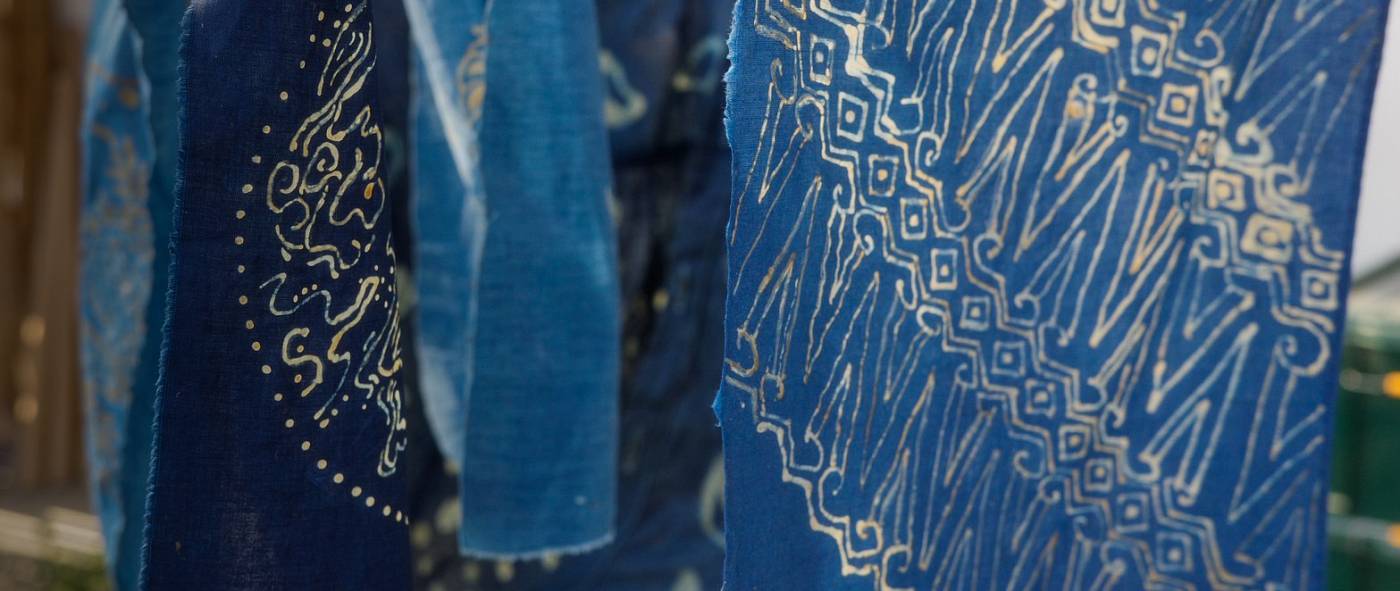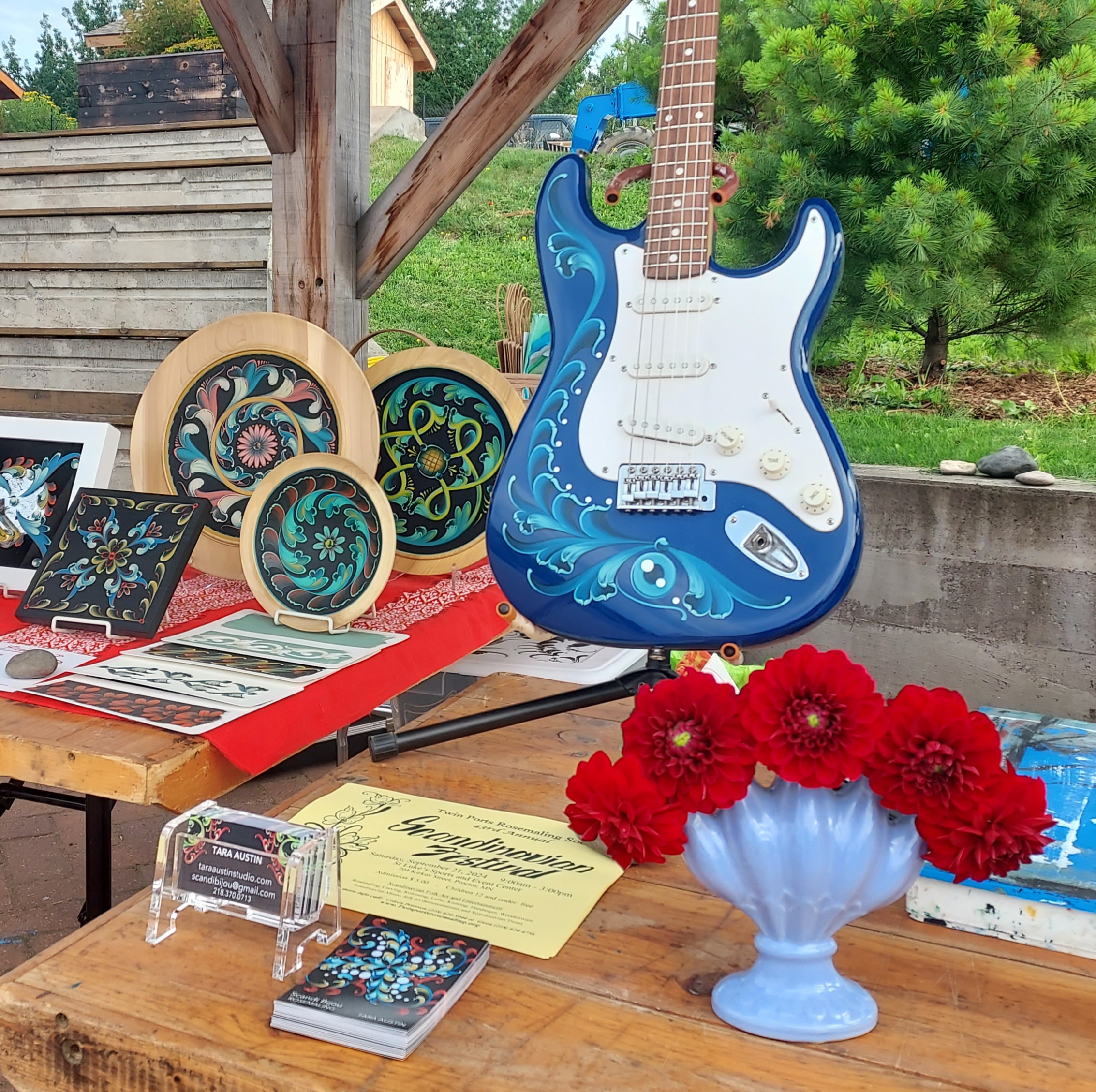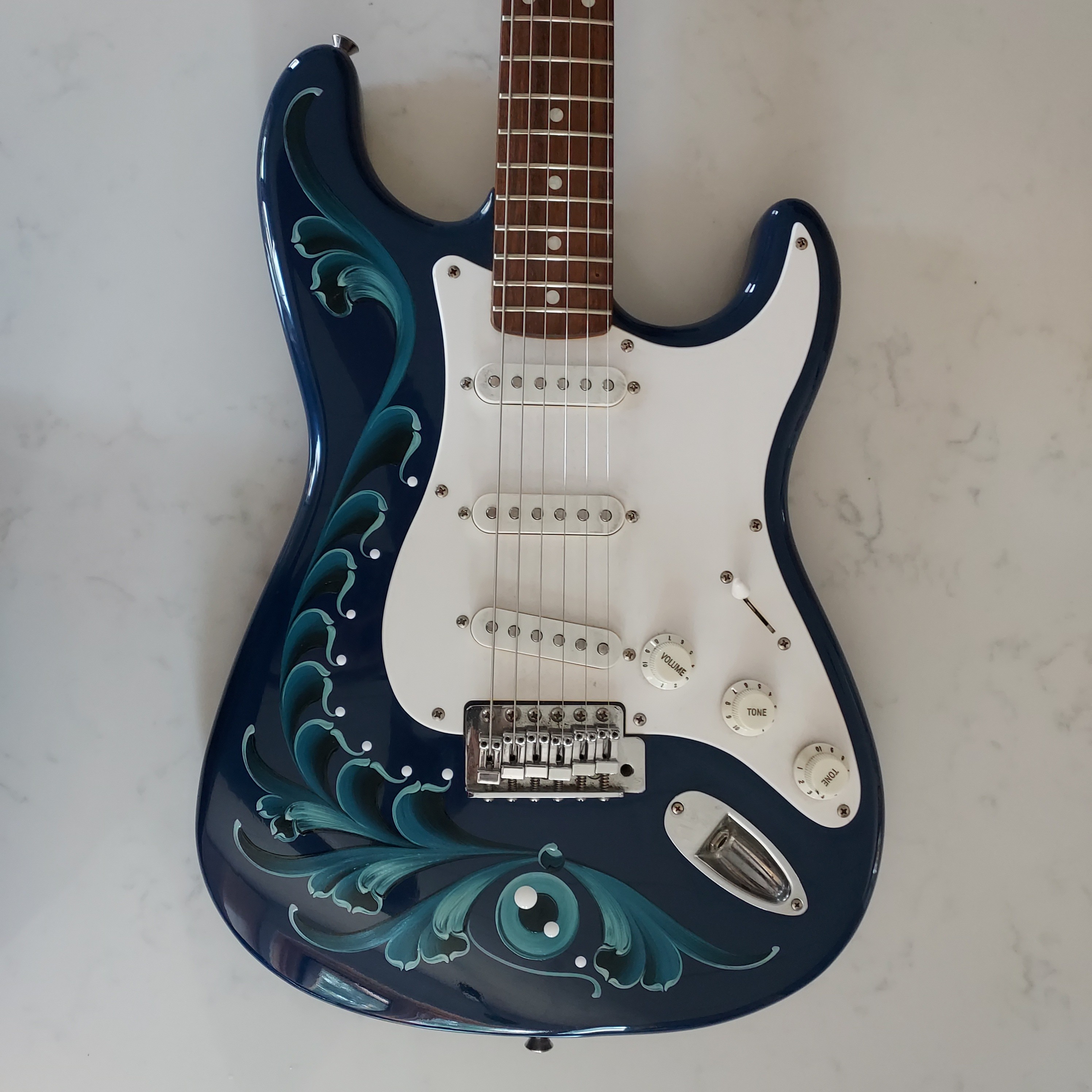
Sounds of Summer

Does rosemaling have a sound? In this blog post, Tara Austin writes about rosemaling a guitar and about the synergy between form, color, and sound.
My most recent project was an electric guitar. I was thankful for this fun project; I believe rosemaling embodies lyrical forms. During my apprenticeship with Andrea Herkert, we would talk about the lyrical qualities of different rosemaling styles: Telemark being loud and joyous, while Hallingdal is a more somber melody.
Painter Wassily Kandinsky said, "Form itself, even if completely abstract, has its own inner sound."
I believe how color and form is used in rosemaling creates a sense of movement and stimulation, and yes, a sound!

My pattern for painting Dala horses has a little saying written, "Make them Sing." When rosemaling, I want to bring a life force into the painted strokes, something the observer can see, feel, and hear as a beautiful thing. I hope to teach this to my students, to be aware of the composition, so that your painting is in harmony.